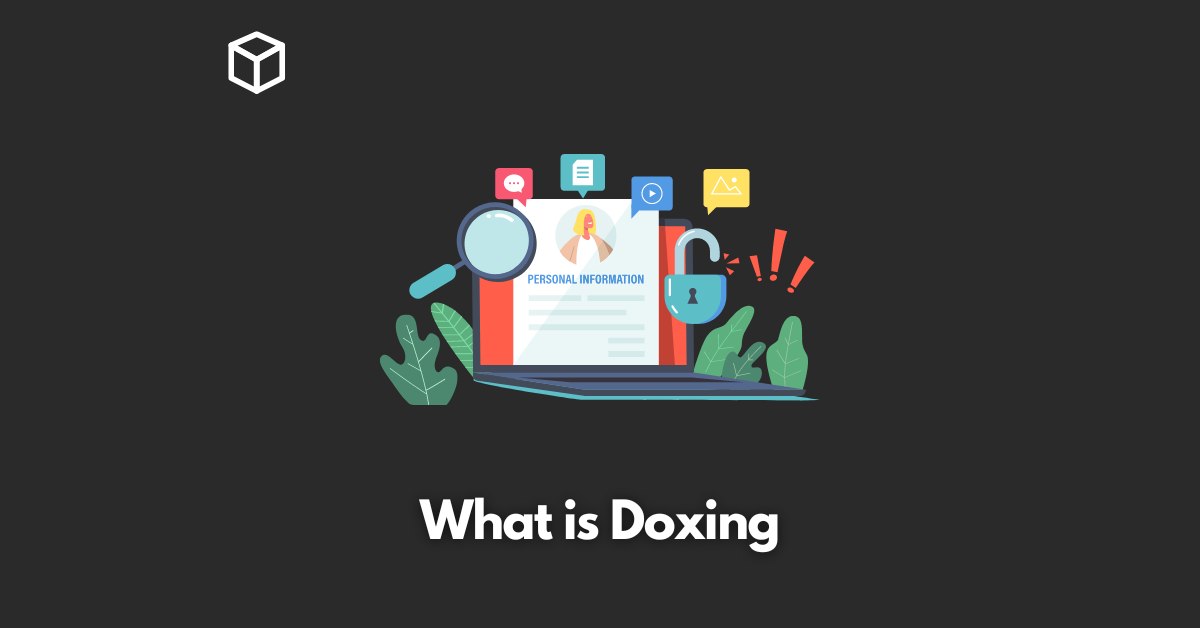Doxing is a term that has been making headlines recently, but what exactly is it?
Doxing, also known as “doxxing,” is the act of publicly publishing private information about an individual without their consent.
This information can include personal details such as a person’s full name, address, phone number, email address, and more.
The purpose of this blog post is to educate readers on the different types of doxing, how it is done, and most importantly, how to prevent it.
Doxing can be extremely harmful and can have long-lasting consequences for the individual who is targeted. It is essential to understand the risks and take steps to protect yourself from doxing.
Types of Doxing
There are four main types of doxing: personal information doxing, location doxing, identity doxing, and reputation doxing.
Personal information doxing is the most common type and includes the release of personal details such as a person’s name, address, and phone number.
Location doxing involves the release of a person’s whereabouts, while identity doxing is the release of information that can identify a person, such as their social security number or passport number.
Reputation doxing is the release of information that can damage a person’s reputation, such as false accusations or embarrassing photos.
How Doxing is Done
Doxing can be done through various methods, including social engineering, phishing and hacking.
Social engineering is the process of manipulating people into divulging sensitive information.
Phishing is the practice of sending emails or messages that appear to be from a legitimate source, but are actually designed to steal personal information.
Hackers can also use hacking methods to gain access to personal information.
How to Prevent Doxing
To prevent doxing, it is important to be mindful of what you share online.
Use privacy settings on social media platforms, use a VPN, use strong and unique passwords, use two-factor authentication, be aware of phishing attempts, be wary of sharing personal information, keep your software and devices updated, and monitor your online presence.
Be mindful of what you post online and who you share your information with.
Make sure your privacy settings on social media platforms are set to the highest level and only share information with people you trust.
Using a VPN (Virtual Private Network) can also help to protect your online activity from prying eyes.
When creating passwords, make sure they are strong and unique.
Avoid using the same password for multiple accounts, and consider using a password manager to generate and store them securely.
Two-factor authentication is an added layer of security that requires a second form of verification, such as a code sent to your phone, before you can access your account.
Be aware of phishing attempts, which are emails or messages that appear to be from a legitimate source but are actually designed to steal personal information.
If you receive a suspicious email, do not click on any links or download any attachments. Instead, contact the supposed sender to verify their identity.
Be cautious when sharing personal information, such as your address or phone number.
Keep your software and devices updated, as these updates often include security fixes to protect against hacking and data breaches.
Finally, monitor your online presence regularly to ensure that no unauthorized information is being shared about you.
What to do if you are Doxed
If you find yourself the victim of doxing, it is important to take immediate action.
The first step is to document the incident by taking screenshots or saving any pertinent information.
Then, contact the authorities and report the doxing to them.
Next, contact the social media platform or website where the information was posted and request that it be removed.
Finally, reach out to friends, family, and professional support for help and guidance.
Conclusion
Doxing is a serious issue that can have long-lasting consequences for those who are targeted.
By understanding the different types of doxing, how it is done, and how to prevent it, you can better protect yourself and your online presence.
Remember to be mindful of what you share online, use privacy settings and VPN, use strong and unique passwords, use two-factor authentication, be aware of phishing attempts, be cautious when sharing personal information, and monitor your online presence.
If you do find yourself the victim of doxing, take immediate action and reach out for help and support.
Always be cautious online and remember to protect your personal information.




